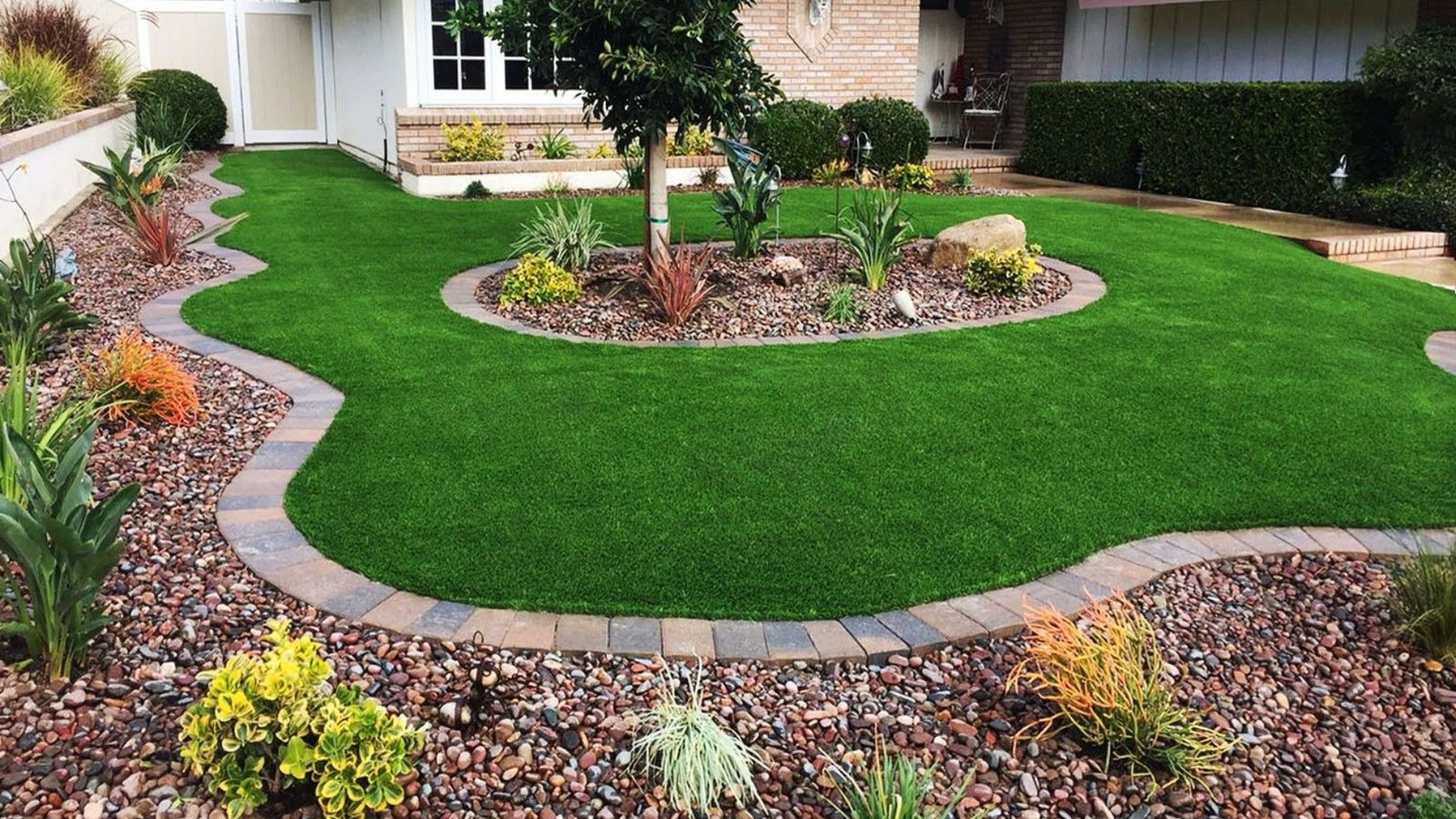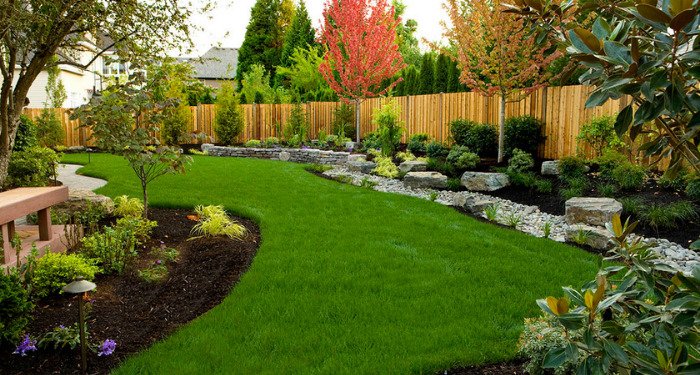Landscaping is an activity that is done to make our environment natural and create a beautiful and useful environment. It involves planfully arranging plants, trees, shrubs, decorative features and structures to create a stylish and useful space. Landscaping not only enhances beauty but also helps improve the environment, such as improving air quality and reducing noise. Everything is considered in landscaping to make any space natural and welcoming. Now, let’s understand this topic in detail.
Landscaping Method and Techniques:
There are many methods to install landscaping. Commonly, these can be divided into some important categories.
Softscaping:
Softscaping refers to the part that involves parts that grow on the ground such as, grass, trees, plants, shrubs and flowers. The purpose of softscaping is to give the land a natural, green and refreshing look. It involves selecting different types of plants that can grow according to the season and weather conditions.
Things Included in Softscaping:
-
Trees:
Trees benefit the environment in many ways, such as providing shade and producing oxygen.
-
Flowers:
Flowers are used in areas where a colorful and bright look is needed.
-
Shrubs and Bushes:
These define spaces and create boundaries.
-
Lawn and Grass:
Maintaining the lawn is also a part of softscaping.
Hardscaping:
Hardscaping refers to the elements that are not directly related to the ground’s surface but help make a space useful and stylish. These are permanent elements and include stones, bricks, tiles, paths, fountains, walls and patios.
Things included in Hardscaping:
-
Patios and Decks:
Outdoor spaces designed for relaxation or gatherings.
-
Walkways and Pathways:
These paths are created for easy movement within a garden or lawn.
-
Retaining Walls:
Used when the ground is uneven, retaining walls help support the soil and balance uneven ground.
-
Fountain and Water Features:
Water features give the garden a soothing and peaceful look and refresh the environment.
Watering Systems:
Watering systems are also a part of landscaping, ensuring proper watering for plants and lawns. These systems reduce water wastage while successfully delivering water to the plants.
Types of Watering:
-
Drip Watering:
This system delivers water directly to the roots, reducing water usage.
-
Sprinkler Systems:
These cover large areas and ensure regular watering.
-
Automatic Timers:
These systems control the timing of watering, which improves performance and maintains a regular watering schedule.

Benefits of Landscaping:
Attractive Environment:
The first thing that landscaping provides is a beautiful and elegant environment. Arranging gardens, outdoor spaces and lawns creates a calming and refreshing feel. It enhances the beauty of your home and also gives guests a positive feeling.
Environmental Impact:
Landscaping has a very positive impact on the environment. Trees and plants produce oxygen, which improves air quality. Commonly, plants absorb dust and pollutants, providing cleanliness and freshness to the environment. Water features like fountains also cool the air, providing relief during the summer.
Increased Property Value:
Good landscaping increases the value of a property. If you design your garden well, it not only beautifies your home but also raises the market value of your property. When your garden or outdoor space is well maintained and attractive, it makes more interest from buyers and investors.
Features and Usability:
Landscaping is not just limited to beauty, it also helps make a space more useful. You can design your garden in such a way that it is ideal for social gatherings or family time. Creating patios, walkways and seating areas can make the space more comfortable for people.
Better Health and Selfcare:
When we live in a natural environment, our mental and physical health improves. Fresh air, green atmosphere and outdoor activities help reduce stress and improve mood. Commonly, gardening is an activity that provides physical exercise as well.
Landscaping Planning and Designs:
Design plays a very important role in landscaping. If you want to design your garden yourself, you need to keep a few things in mind.
Space Use:
It is important to use every single area successfully. If your garden is small, you will need to organize the space so that more plants can be easily fit into it.
Theme and Style:
It is important to follow a detailed theme or style in landscaping design.
You can choose an established style, modern style or even an elegant design.
Plant Selection:
Selecting plants according to the weather and local environment is very important. Every plant needs its unique growing conditions.
Conclusion:
Landscaping not only makes an outdoor space beautiful but also benefits your environment. By using soft and hardscaping techniques, you can create a perfect outdoor space for your home that is both useful and beautifully pleasing. The ultimate goal of landscaping is to arrange our settings in such a way that it improves our daily life. Therefore, if you want your home or commercial space to not only be beautiful but also environmentally friendly and user friendly, landscaping becomes an important part.

